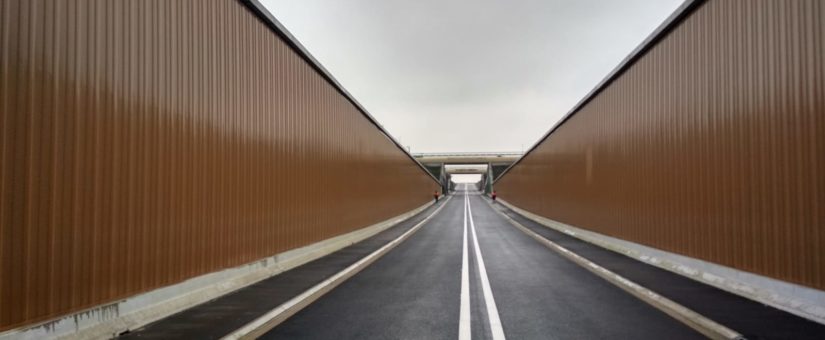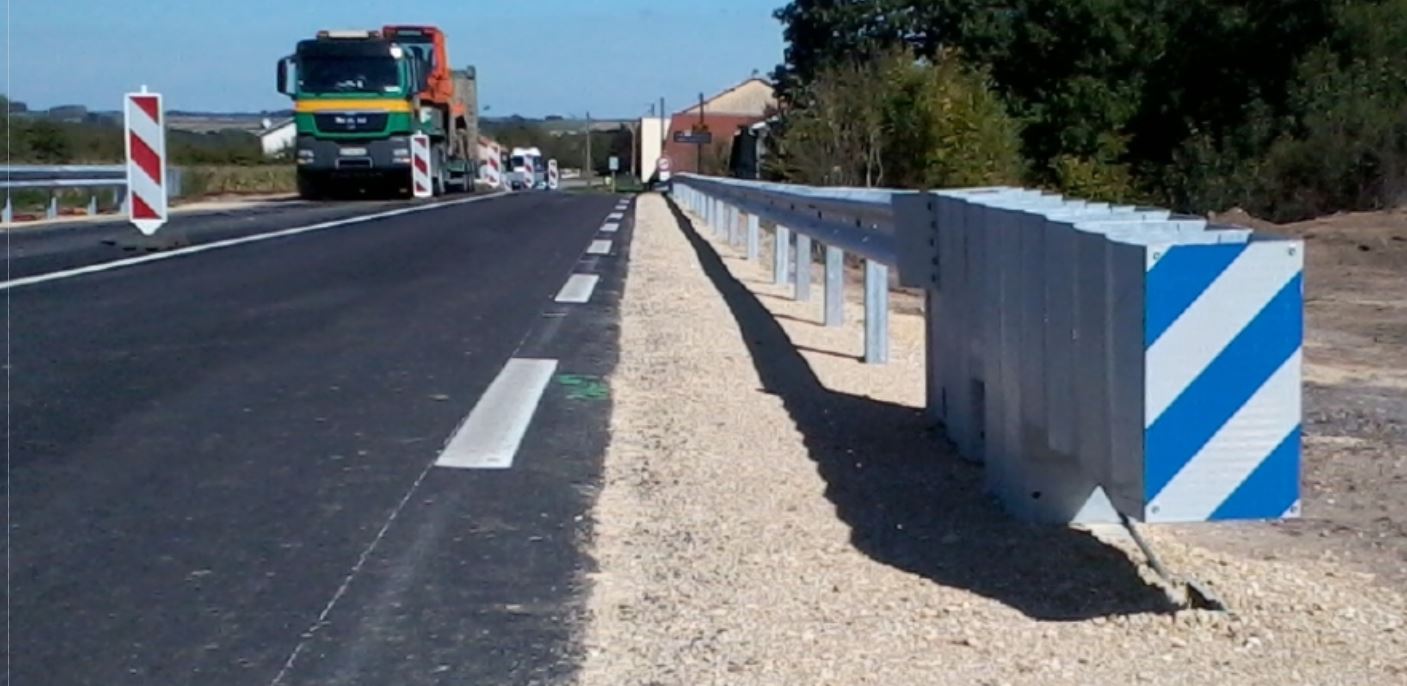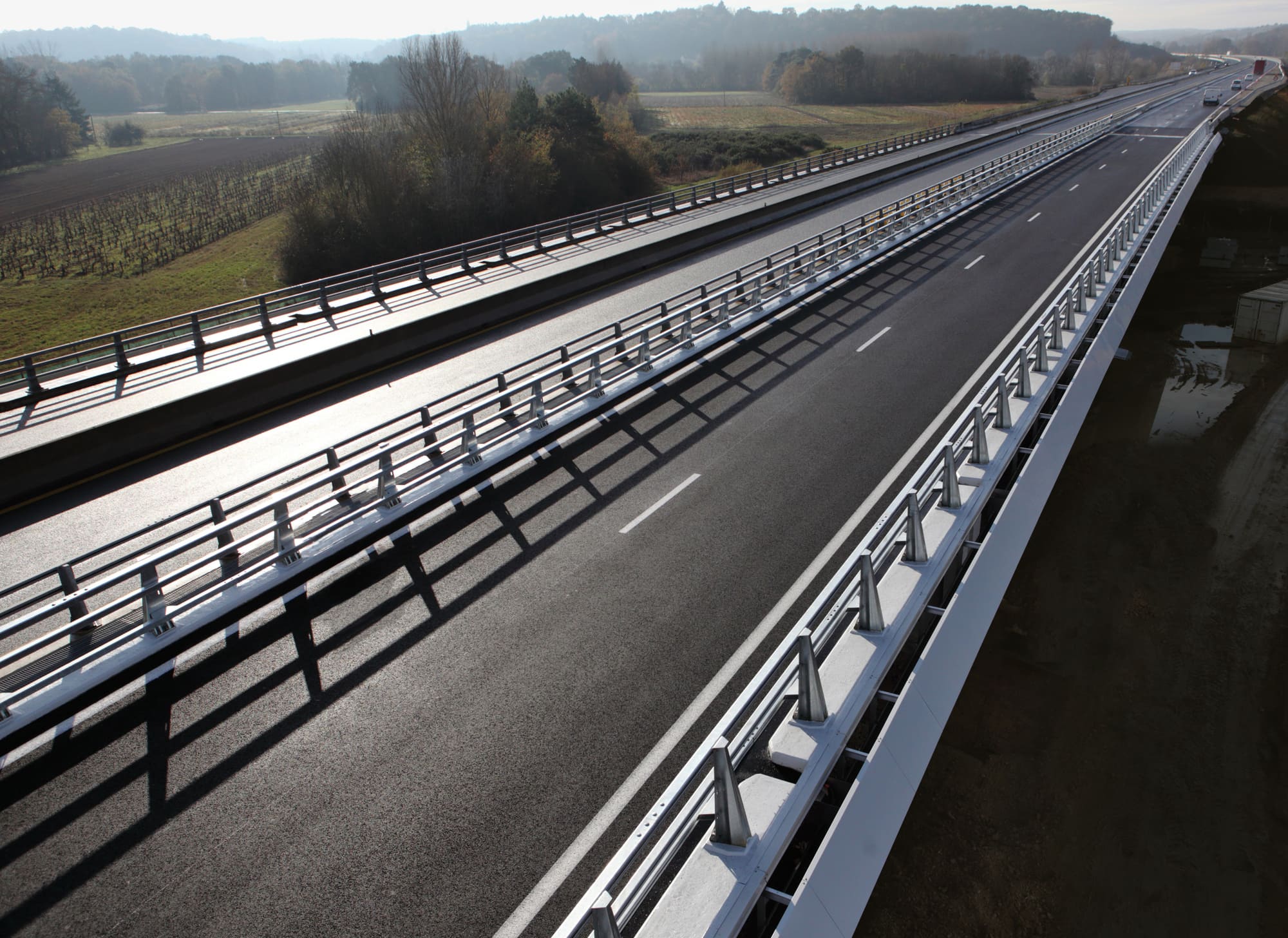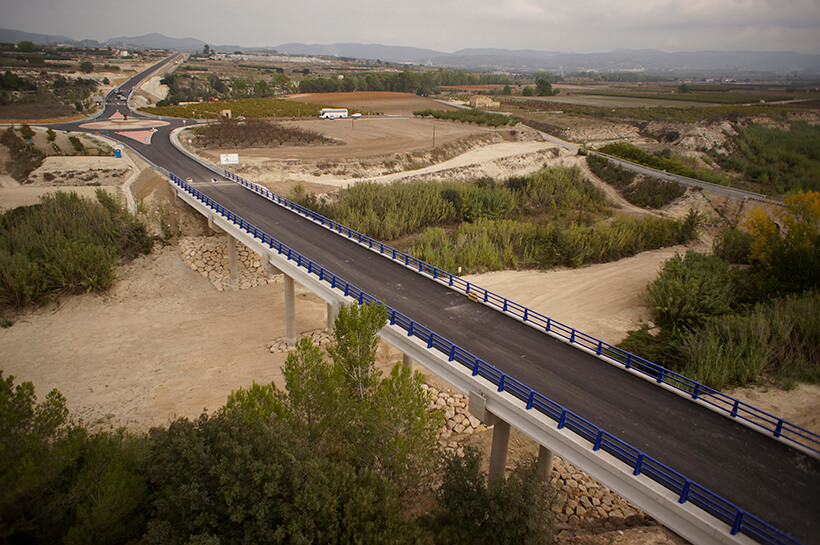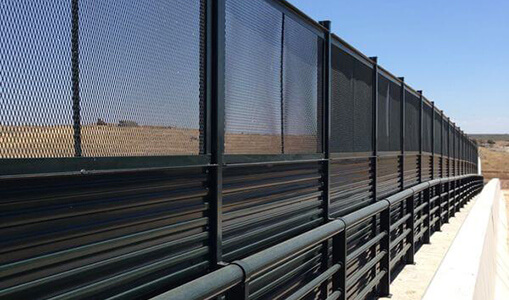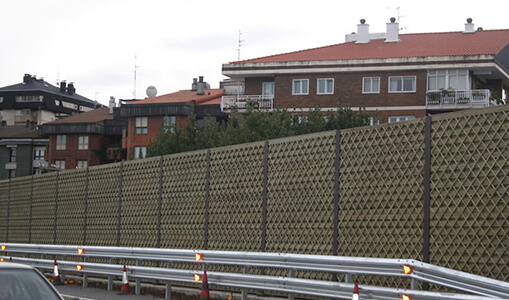The importance of wall covering in facades and tunnels
Wall cladding in facades and tunnels is one of our most demanded services both nationally and internationally, and at the same time one of the most unknown. For this reason, in this article we want to tell you about the great advantages that wall coverings have and what is the difference between cladding on the façade and in tunnels.
Wall cladding in tunnels
In this case, it is a wall cladding made of galvanized steel sound-absorbing panels, specially designed to deal with noise pollution derived from road and rail traffic, both inside and at tunnel entrances. At the customer's choice, galvanized steel panels can be filled with rock wool, a material with a high sound absorbing capacity that facilitates the rebound of acoustic waves inside, thus trapping much of the sound.
Sometimes, poor tunnel lighting poses a greater risk to drivers. In this sense, the installation of our wall cladding on the concrete walls of the tunnel brings luminosity to the interior, facilitating vision and increasing safety. In addition, any additional signaling or lighting system can be installed on our cladding.
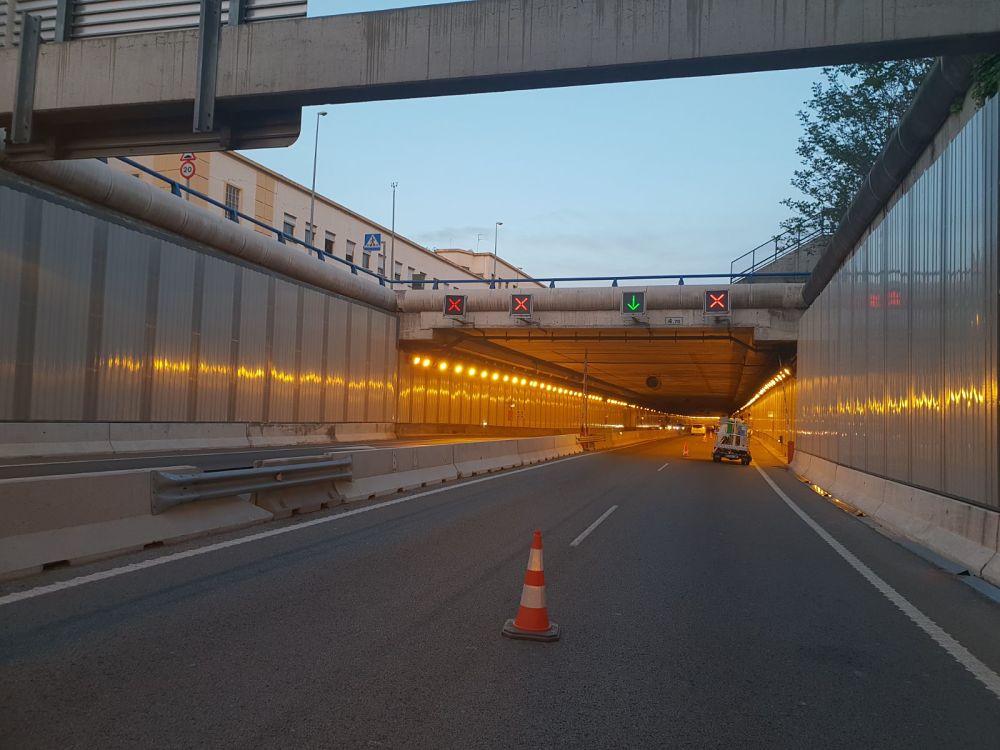
Characteristics and elements of the panels for sound absorbing tunnel coating.
We have several standard construction solutions, configured thanks to the experience of having carried out numerous projects that has helped us to optimize the design and its features.
Our team of engineers studies each project and of steel with the client's specifications, defines the best technical solution. Typically, the cladding has the following elements:
- Panels: made of corrugated and galvanized steel sheet. They can be perforated in case of acoustic absorption requirements. There may be a single front panel or front and rear panels. At the customer's request, its finish can be thermo-lacquered in different colors from the RAL chart.
- Paneles: realizados con chapa de acero grecado y galvanizado. Pueden ir perforados en caso de haber requerimientos de absorción acústica. Puede haber un solo panel delantero o paneles delantero y trasero. A petición del cliente, su acabado puede ser termolacado en diferentes colores de la carta RAL.
- Rock wool: This material is used to absorb sound waves generated by transport systems.
- Supporting structure: It is a wall anchoring system using adjustable rods made up of profiles that allow the panels to be adapted to walls with almost any type of irregularity. We have several bearing systems, in each project the most suitable will be chosen depending on elements such as the state of the wall or the type of coating required.
Advantages of panels for sound absorbing tunnel lining
- Corrosion resistance: we have different solutions depending on the environmental specifications in the area, including up to C5. In addition to being made with galvanized materials, if the client wishes, we can apply primer and / or thermo-lacquering techniques, which protect the coating from the consequences of the passage of time and adverse weather conditions.
- As we have already mentioned, this type of cladding fulfills an important acoustic function, and this is precisely its main advantage.
- Easy installation due to its lightness. High productivity in assembly.
- Its maintenance and repair is also easy in case of damage by accident.
- It is a non-flammable coating.
- It fulfills an aesthetic function as the customization of the color is possible, and it also brings light, unlike the concrete walls to which we are accustomed.
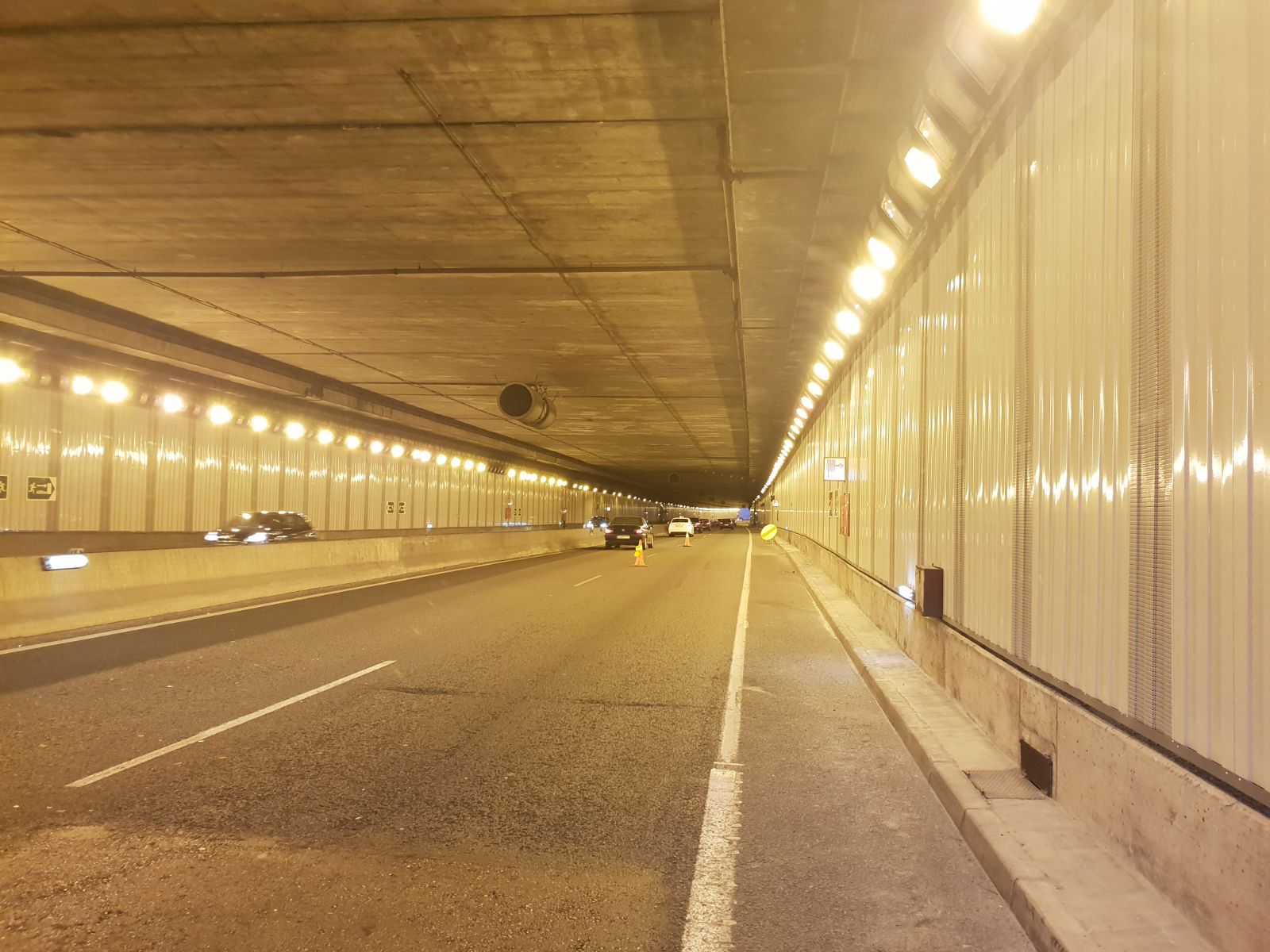
Wall cladding integrated into building facades
In order to minimize the noise pollution produced by environmental noise, such as traffic or the bustle of people, at Metalesa we manufacture and install panels that function as wall cladding on facades, and that are integrated as an acoustic screen in the building .
Below, we show you some images of one of our acoustic wall cladding integration project on the façade of the Atlético Baleares football field. In this case, the panels have been used both to isolate noise from the field, and to prevent noise from the street from breaking into the sports facility.

On the other hand, this product offers a great opportunity to improve the aesthetics of a building through an elegant and quality solution that, thanks to the customization options that we offer at Metalesa, will be able to show off the corporate colors. In this sense, a change to the façade by means of a cladding of these characteristics can make an installation become "something iconic" of an area and give it a certain prestige. Without a doubt, the Atlético de Baleares field is proof of this.
Characteristics and elements of panels for sound absorbing coating integrated in facades
In the same way as in the case of tunnels, we have several standard construction solutions applicable to the integration of acoustic coatings in facades. Our team of engineers will define the best technical solution according to the customer's specifications.
The elements that make up this solution are usually the same as in the case of tunnels. The main difference is usually in the bearing structure, which must be defined ad-hoc for each project, since it is not the same to anchor acoustic panels to a low-rise wall but with great vibrations due to circulating traffic, than to a wall. of a high-rise building and normally without these vibrations.
Advantages of wall cladding on facades of urban buildings
The facade is the exterior wall of the enclosure or vertical closure that surrounds. It is one of the most important elements of the construction along with the roof. Both act as a barrier against external weather factors
Providing the facades of the infrastructures in urban areas with a facade cladding is essential, as it is one of the most important elements of its construction due to its acoustic, aesthetic and climatic function.
Acoustic and mechanical properties of our panels
The acoustic properties of our panels have been evaluated according to EN 1793-1 standards, obtaining maximum acoustic absorption and insulation values. Any acoustic product manufactured by METALESA SEGURIDAD VIAL complies with the requirements established for CE MARKING in compliance with annex ZA of the EN 14388 standard.
Regarding mechanical behavior, the panels are tested according to the EN 1794-1 standard, having obtained very high loads in tests carried out in accredited laboratories.
If you are looking to use wall cladding in facades or tunnels, contact us and we will give you a solution that suits your needs. Call us at 96 088 99 44 or send us an email to metalesa@metalesa.com
Transitions and Terminals: Innovative solutions for black spots
Roads shorten distances and bring people closer together. That’s why it is so important to ensure their safety as much as possible, so that they reach their destination safely, be it their work, their family or their friends. The different national, regional and local administrations keep the main black points of our roads identified and updated, and from Metalesa, we have been participating in a number of projects that aim at providing safe solutions to these specific locations for many years. A clear commitment to remodel our roads includes equipping them with new infrastructures that fulfil the purpose of ensuring road safety. In this scenario is where we act.
Cullera-Favara Section: One of our latest Road Safety projects
During the last two years, work has been done in Cullera on the construction of a section that will undoubtedly represent a milestone for the improvement of the communication routes in the area.
As José Luis Ábalos, Minister of Transport, Mobility and Urban Agenda points out, "this action will translate into an improvement in road safety by creating an alternative route to that of the current national highway as it passes through both towns."
The truth is that residents have been demanding the completion of this infrastructure for a long time, and finally, they will be able to count on the Cullera and Favara bypass, a section included in the A-38 corridor, which represents the largest investment in this matter of infrastructures that the central government has never carried out in the Valencian region of Ribera Baixa.
Metalesa in the project: installation of transitions and terminals
At Metalesa we have been in charge of installing more than 15,000 meters of META16 metal parapet with containment level H3. We invite you to sit down to enjoy this impressive video where you can see the result of so much work.
https://www.youtube.com/watch?v=zd_MFsbvDIk
But the objective of this article is to present the transitions and terminals, other road safety products that are very unusual in Spain, but undoubtedly essential on the roads, and which will become more widespread as soon as our leaders and public administration technicians acquire greater sensitivity for the situations they avoid.
Blackhead removal with transitions and terminals
The black points or accident concentration sections (TCA) are sections of the road network in which a large number of traffic accidents occur each year.
From the Cullera City Council, they affirm that this work "was of vital importance to prevent more people from losing their lives." In addition, Oro Azorín, mayor of Favara, also believes that it will offer the town a great increase in road safety.
Municipal sources in Cullera also assure that it is good news for the entire Valencian Community because the black spots on the roads that have suffered, especially the populations of the coast, are being eliminated.
Transitions for roads
The installation of transitions for roads allows the union between containment systems of different nature, that is, it connects two safety barriers of different cross section or different level of containment, such as a metal parapet and a New Jersey-type concrete barrier.
At Metalesa we have an approved Transition designed in a versatile way, that is, it allows us to connect both our META13, containment level H2, and our META16, containment level H3, to a contiguous concrete barrier.
It is a device designed and manufactured entirely by Metalesa, and approved according to the French standard NF-058, which implies that the transitions that we install have been shock tested on a full scale according to said standard. We are the only Spanish company that has tested transitions between different containment systems on a full scale because we have decided to be ahead of our competition. We believe that the French standard represents the future of what the European standard will establish, which is currently being drafted by the standardizing technical committees to which Metalesa belongs.

What are the advantages of installing a highway transition?
- System reliability: In the event of a side impact of the vehicle, it behaves like a conventional metallic barrier, thus guaranteeing the containment and adequate redirection of the vehicle.
- Easy to repair and repair parts available from stock.
- Anti-corrosion treatment: We offer various finishing options for road transitions, both hot-dip galvanized and thermo-lacquered, as a treatment that combines both processes.
Road Terminals
Highway terminals are placed at the ends of containment systems such as parapets or metal barriers, to ensure greater safety against a frontal impact with said completion. We have a wide range of models with different characteristics and certificates, all of which have been tested by means of tests in an accredited laboratory according to the EN 1317 standard.
We offer supply and installation of three models:
Model T50 - 50KM/H
This terminal is ideal for urban environments, in areas whose maximum permitted speed does not exceed 50 km / h.
Model P2 - 80KM/H
Terminal P2, unlike Model T50, is used on highways, where the permitted speed is not higher than 80Km / H. We have several designs of road terminals.
Model P4 - 110KM/H
This terminal is also designed to be installed on highways, but on high-speed roads. We have several homologated models of anchoring to the ground, both for concrete and earth ground.
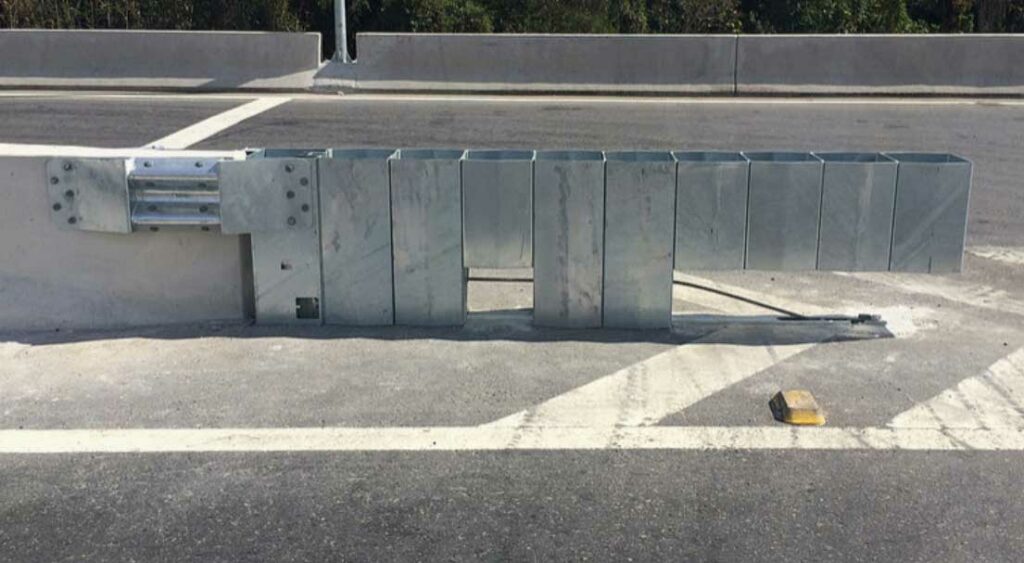
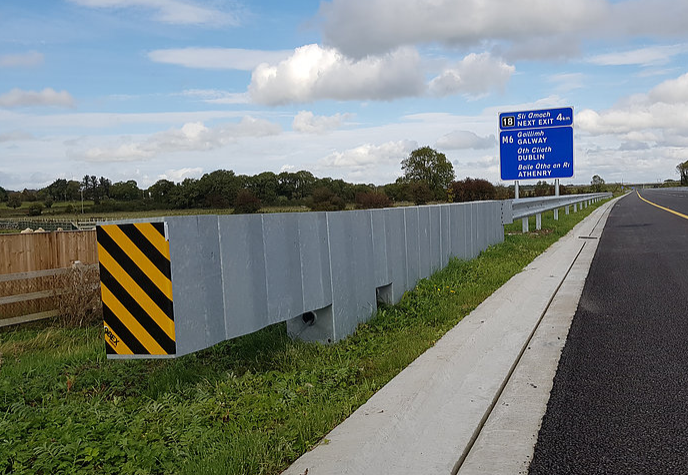
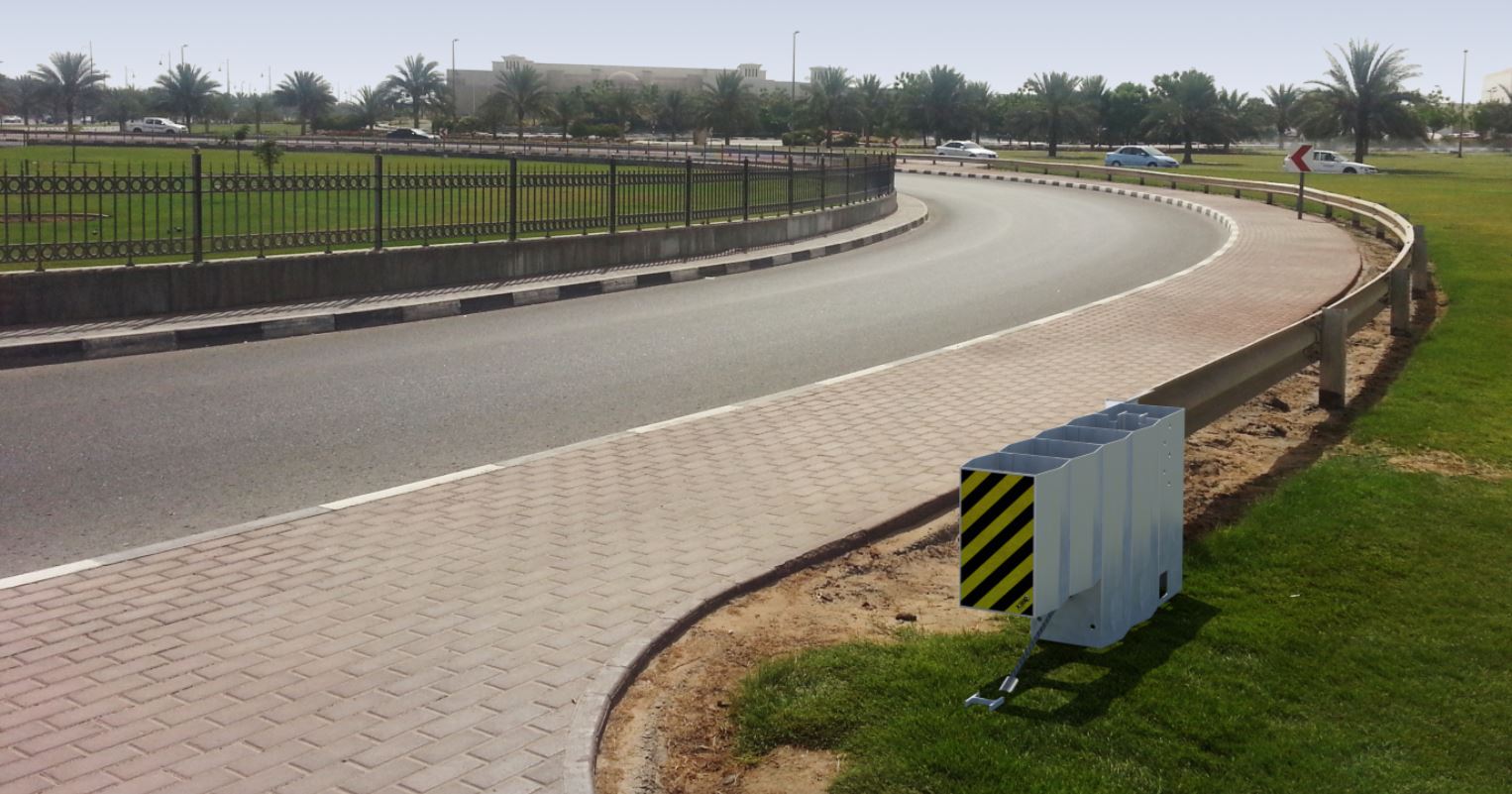
Undoubtedly, projects such as the construction of the Cullera-Favara Section, which include infrastructures for road safety such as our transitions and terminals, show that there really is a commitment to make the roads safe roads that serve what we commented at the beginning of this article: bring people closer. For more information call us at 96 088 99 44 or send us an email to metalesa@metalesa.com
Types and applications of railway equipment
Since our origins at Metalesa we have always been concerned about safety. Whether in urban environments or roads we have always worked to offer the best products with which to keep pedestrians and vehicles safe. But our scope of action does not stop there, we also have extensive experience in railway equipment products, and on this we would like to focus today’s article so that you know a little more about everything we can do for your railway project.
Products and regulations on railway safety
Like any product, there is a railway safety regulation that must be complied. In railway equipment, this corresponds mainly to the infrastructure managers (ADIF in Spain or SNCF in France). At Metalesa we have been working for many years on the deployment of the high-speed rail network in Spain, collaborating with the main companies in the sector and offering products that meet the highest quality standards.
Railings and fences type ADIF
In order to guarantee safety at the crossing points in railway infrastructures operated by ADIF, at Metalesa we have a complete range of specialized security systems that comply with the quality standards set by the network administrator.
With our range of ADIF-type railings and fences we can create a complete protection system for pedestrians on bridges, viaducts or other passage areas within railway infrastructures. When a project of these characteristics is presented to us, we carry out a study of the needs of the layout and manufacture any element that may be required.
Different anticorrosive treatments can be applied to our entire range of railings and fences. Depending on the characteristics of the project and client specifications, we can apply either a hot galvanized finish, or a thermo-lacquered finish or even a mixed application for more aggressive environments.
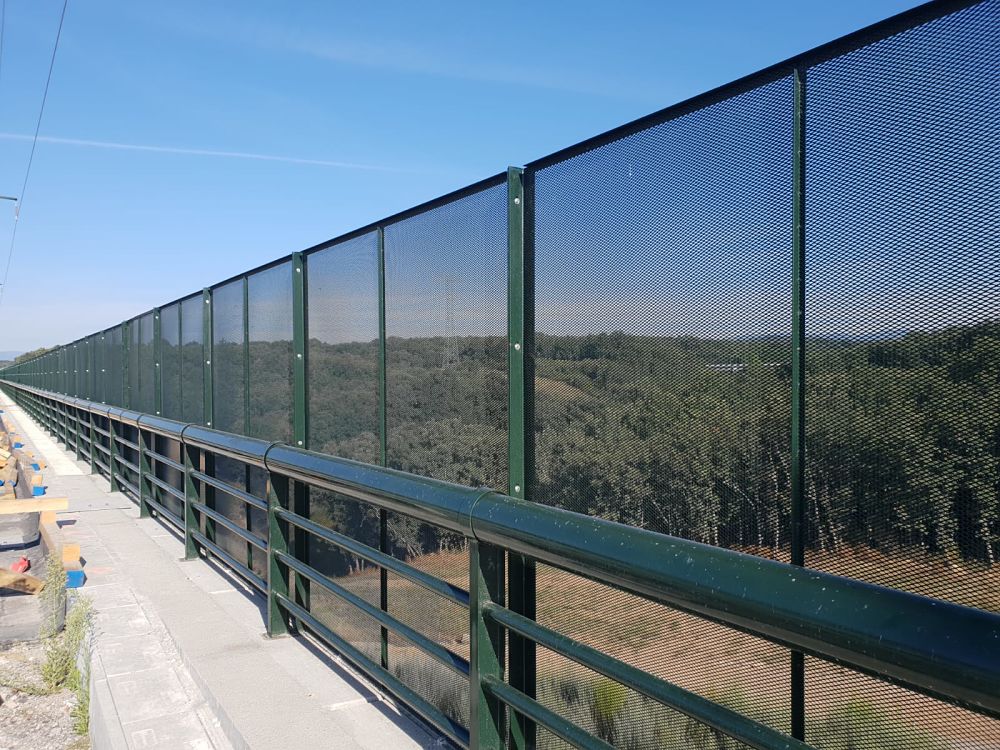
Railings and handrails for stations
At Metalesa we manufacture railings for stations with various shapes and materials to guarantee the safety of passengers, while adapting the product to the aesthetics of the place. We can manufacture them with various materials. Steel is the usual one, and under client requirement, the product can receive anti-corrosion treatments like hot-dip galvanization or thermo-lacquering to guarantee their resistance to deterioration caused by the weather and time.
We also manufacture stainless steel railings of different quality and with a wide variety of finishes, always adapting to the needs and aesthetics of the railway station.
Fences and station enclosures
Train, subway or tram stations need enclosure and fences systems that are resistant to high volume of traffic while complying with current regulations.
Regarding security systems to offer protection to people in areas close to stations or railway facilities, we have a wide variety of station enclosures and fences that we can manufacture to order to be able to solve and adapt to the requirements of the project.
The enclosure systems for railway stations are products that are often subject to inclement weather. That is why at Metalesa we work to offer different anti-corrosion treatments such as hot galvanizing, thermo-lacquering or a mixed finish that offer a layer of protection against superior humidity and oxidation.
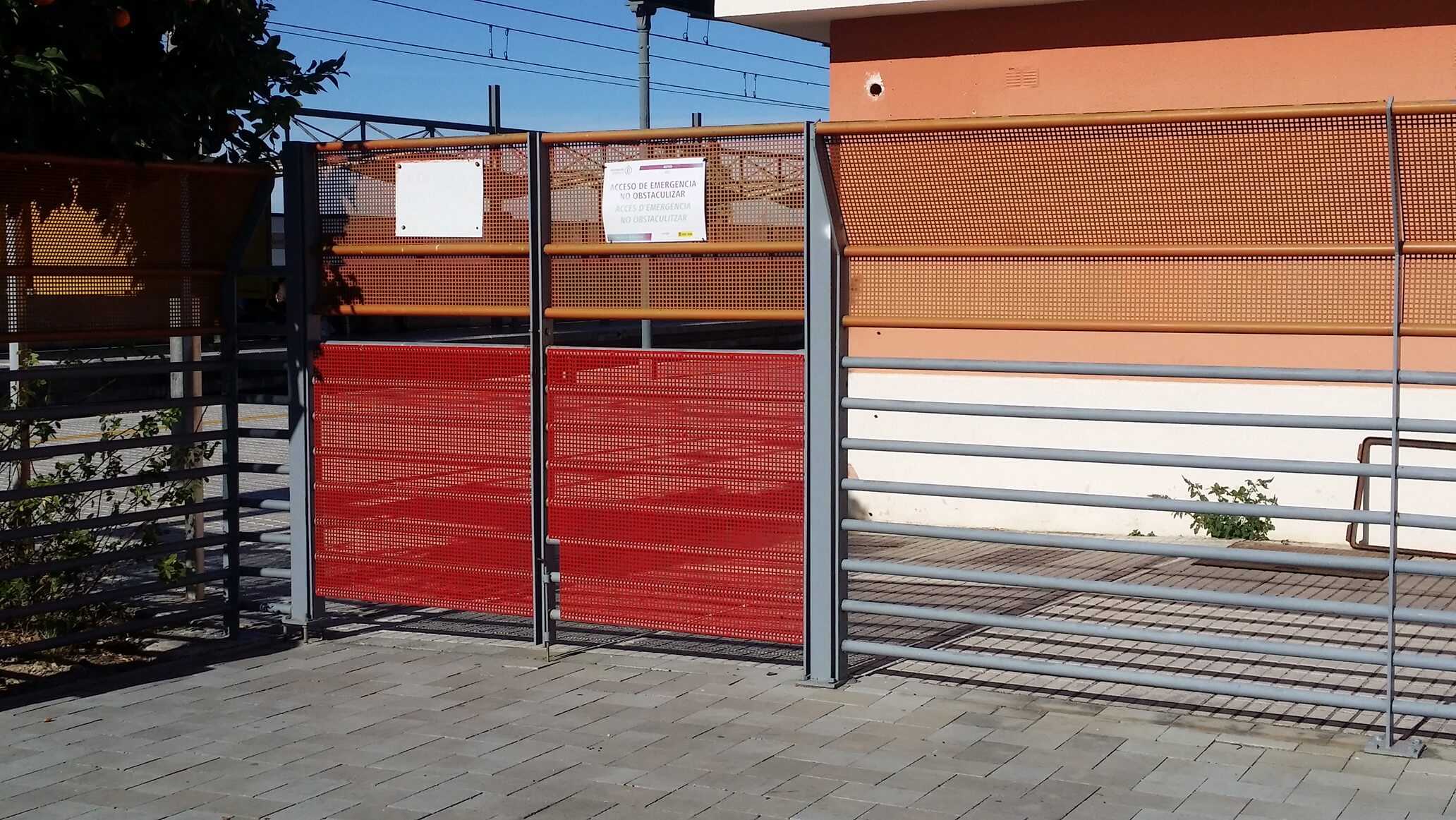
Handrail and grilles for walkways
Another of the safety systems that are installed in railway tunnels are handrails and grilles for walkways. These elements are intended to provide safety for pedestrians inside a tunnel. Our extensive experience in the tunnels of the suburban and high-speed rail network allows us to offer a customized product manufactured according to the materials and criteria that best suit the project.
When facing a new project, our technical office will carry out a needs study and present you with a proposal that meets your needs.
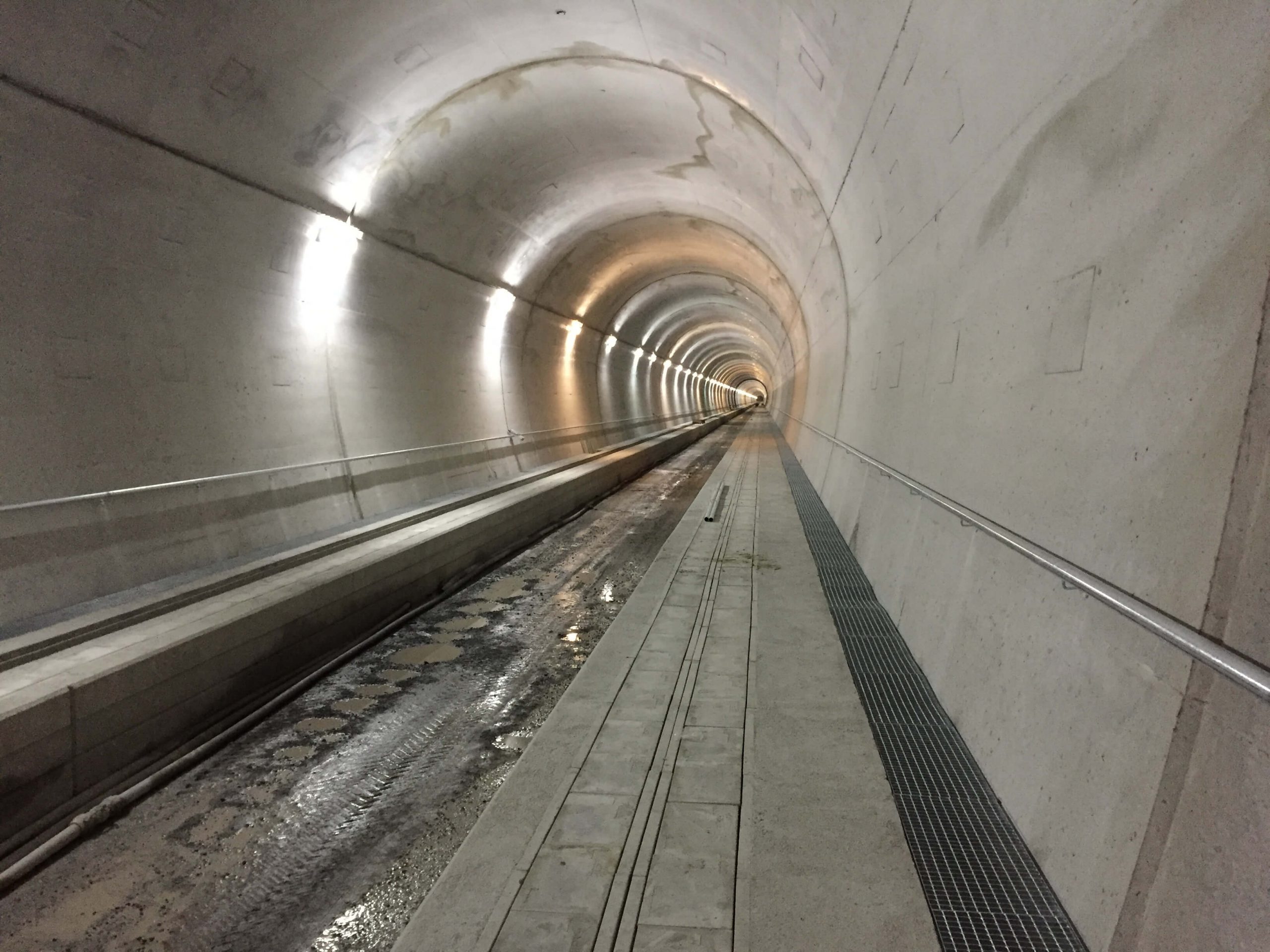
Catenary protectors
To protect the catenaries from objects launched from overpasses, we can offer catenary protectors. They can be designed and manufactured according to the specifications of each project. We have extensive experience manufacturing this type of product with different shapes and finishes.

If you are thinking about a new project and you need a supplier of railway safety equipment, at Metalesa we are ready to give you a solution to these challenges and we will be happy to help you. For more information you can contact our technical office through the contact form, by calling 96 088 99 44 or 677 43 34 93 or by sending an email to metalesa@metalesa.com
What is UNE EN 1317 Standard?
At Metalesa we are very clear about our mission: to ensure the safety of what matters most to us; people. For this reason, we guarantee that our products comply with the established standards and regulations. Seriousness and professionalism is what defines us. Our parapets have been subjected to real tests in accredited laboratories based on the UNE EN 1317 standard.
¿What is UNE EN 1317 standard?
This standard was established on January 1, 2011 by the European Union, and certifies the quality and safety of vehicle containment systems. It is based on subjecting these systems, such as parapets or guardrails, to a test methodology following specific criteria valid for all Europe. Among many other things, the UNE EN 1317 standard harmonizes impact tests simulating real accidents involving vehicles, mannequins as drivers and the containment system itself. In this way, both the behaviour of the system and its impact for the drivers themselves are evaluated.
The configuration of each essay varies completely depending on the level of containment being tested. The type of vehicle involved, the impact speed or the angle of incidence are defined for each essay specifically. After the impact, the damages of the containment system, as well as the deck on which it has been anchored, and the impacto on the mannequins are evaluated. From this analysis the laboratory concludes a set of technical parameters that characterize the behaviour of the system. Main ones are dynamic deflection, working width, severity index and intrusion index.
What is it exactly a containment system?
A vehicle restraint system is a barrier that made of various materials and used to lessen the consequences of an accident on the road. Metallic ones have the advantage of absorbing a large part of the kinetic energy of the crash and facilitate the redirection of the vehicle's trajectory. For this reason, the severity of the impact is lower, thus demonstrating a great contribution to road safety. However, sometimes, the circumstances of the road require a concrete system with less absorption capacity and less deformation. In general, the occupants of the vehicle tend to be more affected. Based on the danger of the sections and on a history of accidents, it is the responsibility of national, regional or municipal public administrations to study and decide where to install or substitute vehicle containment systems.
Parameters to analyze looking at UNE EN 1317 standard
During real tests in an accredited laboratory the following set of parameters are analyzed.
Containment level
It indicates the ability of a SCV to withstand the impact load of a vehicle. The selection of the level of containment that a safety barrier must have proved to be installed on the margins of a road will depend on the risk of accidents, which in turn is defined by the speed of the road and the average intensity of heavy vehicles in each sense at the time of commissioning.
Impact severity
The impact of a vehicle against a SCV carries obvious risks for its occupants. The severity of these risks inside the passenger compartment is determined by the level of impact severity. This is calculated from the combination of the deceleration (ASI) and head impact (THIV) values.
Deformation of the system
The behaviour of a SCV is characterized by the transverse displacement of the device during impact. This is defined in the tests through the parameters of dynamic deflection (D), working width (W) and intrusion index (VI).
On our website we dedicate specific spaces to clarify any questions that may exist about the UNE 1317 standard.
In addition, in our frequently asked questions section on metal parapets we anticipate the queries that we typically receive from engineering or construction companies regarding the interpretation of the standard.
UNE EN 1317 standard applied to our products
Bridge Parapet
Our bridge parapets are metal security barriers that are installed in order to serve as vehicle restraint systems. We market many different models that have success under the appropriate tests to be able to certify the UNE EN 1317 standard, and therefore accredit the CE marking.
On our website you can see the videos of the tests carried out, for example, that of the META16 metal parapet of containment level H3.
We also design, develop and commercialize transitions between containment systems with NF marking after having successfully passed laboratory tests in accordance with the French standard NF 058. It must be taken into account that UNE EN 1317 lacks specificity to evaluate and accredit with CE marking transitions between parapets between each other, or between parapets and other types of barriers.
H2 and H3 parapets, urban and mixed parapets, guardrails ... Those are some of our products in our portfolio whose main purpose is to guarantee road safety.
Handrails and Fences
The handrails and fences that we manufacture and install accomplish high quality standards in order to offer the maximum possible protection both on the road and on urban areas. In addition, they are all subjected to a corrosion protection treatment.
As in the case of bridge parapets, railings and fences are also containment systems that are designed and calculated by our R & D and Structural Calculation departments following parameters set by European regulations. We have a wide variety of these products to accomplish customer demands:
Railings: Steel, stainless steel, with cable and with perforated sheet metal.
Fences: Metallic, anti-vandal and electro-welded.
Thus, it is evident that neither vehicle containment systems can be absent on our roads, nor a norm such as UNE EN 1317, in charge of regulating and guaranteeing their correct compliance. At Metalesa we take road safety very seriously from an efficient and innovative perspective, which leads us to continue growing and betting on the best.
Would you like more information about the UNE EN 1317 Standard and our road safety products? Do not hesitate to contact us.
The opening of the Pobla del Duc relief road avoids dangerous routes
METALESA has contributed to improving the safety of the new road that runs parallel to the current CV-611 through the municipal areas of Benigànim, Quatretonda and La Pobla del Duc.
The company took part in this project reconciling one of its main objectives: improving road traffic safety by installing 420m of META13 metal parapets (H2 containment level, a great option among metal parapets), on two bridges of similar characteristics on the Torrella and Forcall ravines with total lengths of 110 and 100 metres respectively. This solved the problem of accessibility and functionality and at the same time provided a greater level of comfort, avoiding dangerous bends for drivers, improving plan and elevation, and reducing travel time.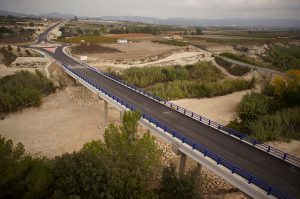
Another goal was to increase the cross section of the road bed, which facilitates vehicle traffic, and improves the bearing capacity of the road, to achieve a more comfortable journey. It also sought to improve signalling and beacons, longitudinal and transverse drainage infrastructure and its integration into the landscape of the environment.
The work covered the section of 3,179 metres from the existing roundabout on the outskirts of the centre of Benigànim, at PK 4+250, to the roundabout that intersects the CV-611 of the railway station road.
The road has two lanes, one for each direction, a width of 3.5 metres, 1.5 metre hard shoulders on both sides, berms of 0.5 metres and traditional or safety ditches on the side of the clearing.
Keep an eye on our blog to keep up to date with all METALESA’s projects and breakthroughs.
Road Safety Improvement on structures: transition using a versatile joint between different high-containment systems for vehicles
Project: Road Safety Improvement on structures. Transition using a versatile joint between different high-containment systems for vehicles.
File No.: IMACPA/2017/108
In September 2017, METALESA S.L. received a subsidy from the Valencian Business Competitiveness Institute (Instituto Valenciano de Competitividad Empresarial - IVACE), specifically the R&D Projects Certification Programme. The aid is funded by the ERDF Operational Programme of the Valencian Community 2014-2020.


METALESA installs 3km of META16 parapet on viaducts on the A-23
In June 2018, METALESA completed the installation of its META16 parapet with H3 containment level on all the viaducts of the Caldearena-Lanave section of the A-23 between Huesca and Sabiñánigo. In this section, the parapet is concentrated on several overpasses and some landmark viaducts such as Fontanal and the river Guarga.
This project considerable improves road safety as it is a split before the fork of the motorway to bypass the port of Monrepós. Its design also preserves a space of great ecological value in line with the Ministry of Development’s environmental study.
Read more about this news in Heraldo (in Spanish).
Develop a new range of acoustic screens with high performance and mechanical qualities.
Project to develop a new range of acoustic screens with high performance and mechanical qualities.
File No.: IMACPA/2018/245
METALESA, S.L has received support for project IMACPA/2018/245 from the Valencian Business Competitiveness Institute (Instituto Valenciano de la Competitividad Empresarial - IVACE), within the plan of complementary actions to promote business R&D in 2018, whose certification process has been carried out by an entity accredited by ENAC co-financed by the European Regional Development Fund (ERDF) through the ERDF Operational Programme of the Valencian Community 2014-2020.


Cornices on bridges and viaducts project
Cornices on bridges and viaducts project. Development of multi-purpose systems for the runoff and collection of rainwater and for the channelling of electrical installations.
File No.: IMACPA/2016/174
In October 2016, METALESA S.L. received a subsidy from the Valencian Business Competitiveness Institute (Instituto Valenciano de Competitividad Empresarial - IVACE), specifically the R&D Projects Certification Programme. The aid is funded by the ERDF Operational Programme of the Valencian Community 2014-2020.


Completion of work on the high-speed track line for the San Isidro-Orihuela section (Alicante)
In March 2016 METALESA completed the supply and assembly work on the San Isidro-Orihuela section (Alicante) of the High-Speed Line (AVE). Once again, METALESA successfully completes its work on a landmark project to roll out railway infrastructure in Spain, guaranteeing the use of the best safety equipment.
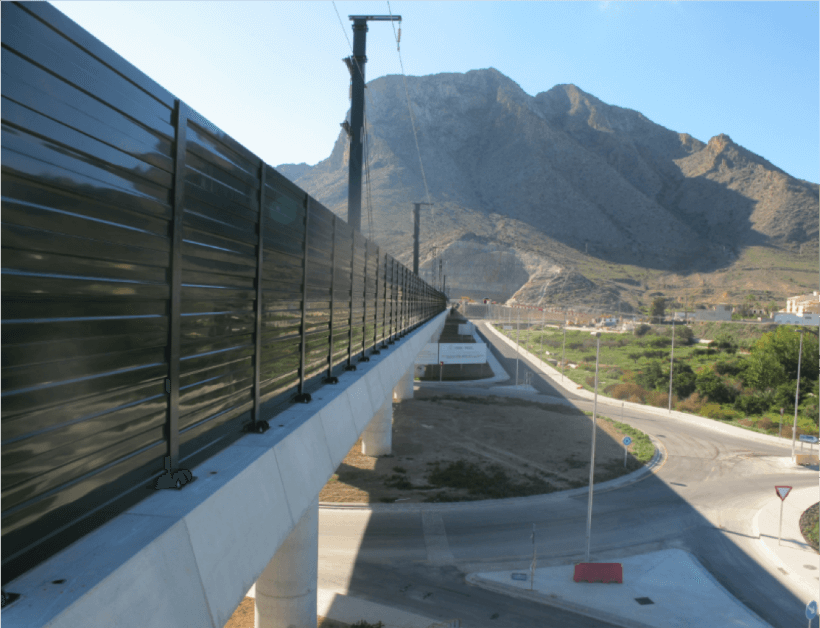
The elements and distances covered were:
7,200m2 of acoustic screens in viaducts
6,000m of handrails in tunnels
500m of guardrails
300m of vandal-proof fencing
500m of enclosures in the new Callosa de Segura station
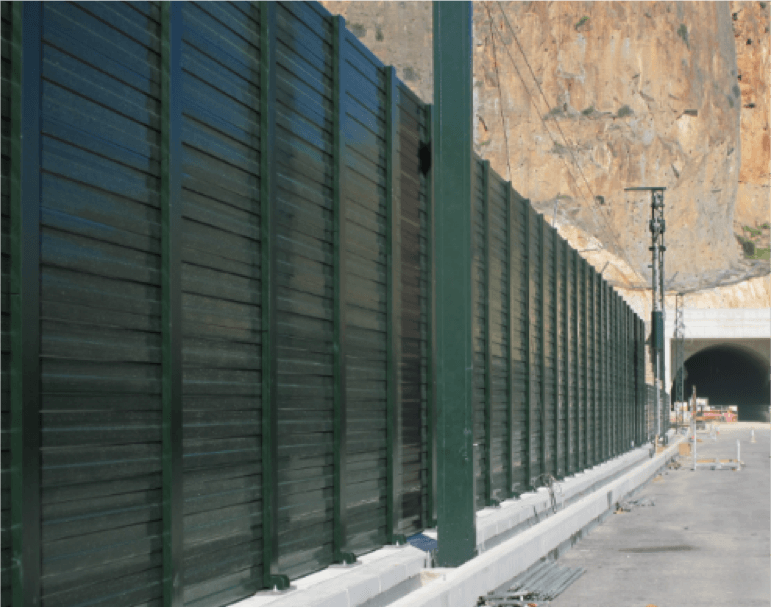
This section, 9.6 kilometres in length, is part of the High Speed Line Madrid - Castilla La Mancha - Valencian Community - Region of Murcia, and runs through the municipal areas of San Isidro, Granja de Rocamora, Cox, Callosa de Segura, Redován and Orihuela.
This stretch is part of the route between Monforte del Cid (Alicante) and Murcia, 64.7 kilometres long, and whose contract has already been awarded and is in the execution phase.

From the point of view of efficiency and maximum use of new infrastructure, it is important to note that the new service from Monforte del Cid - Murcia will consist of double standard-gauge track, which will allow commuter services to connect with Alicante, Elche, Orihuela and Murcia.

When all these sections are finished, the hourney times by train between Madrid and Elche, and between Madrid and Murcia, will reduce to 2 hours and 10 minutes, and to 2 hours and 25 minutes, about 30% of the time of going by road.

METALESA continues to offer a quality product in the general interest of Spanish and European citizens, as well as the talent of its team of professionals. Metalesa makes the best road safety equipment available and is firmly committed to continue developing the Spanish and European railway infrastructure network to reduce journey times
